



























































































No one enjoys the presence of dust in a home. In addition to being an eyesore, excessive dust in a home can make it hard to breathe and could potentially affect human health as well. As much of a nuisance and health risk as dust can be, it can also be easily remedied. Homeowners hoping to rid their homes of dust can take the following measures.
• Use a vacuum with a HEPA filter. A HEPA, or high-efficiency particulate air, filter improves indoor air quality by removing microscopic contaminants that can cause sickness when breathed in.
• Open windows when the weather permits. Chemicals
known as polybrominated diphenyl ethers, or PBDEs, are commonly found in dust. Opening windows when the weather permits helps diminish those concentrations while reducing dust.
• Remove clutter from the home. A cluttered home is often a dusty home. Homeowners who collect or simply fail to discard items like magazines, newspapers or junk mail are inviting dust.
• Clean bedding once a week. Dust is especially fond of bedding, and unwashed bedding is often a paradise for dust.
• Dust frequently. It might seem like a no-brainer, but frequent dusting is a great way to remove dust. As simple as it sounds, however, many people simply don’t dust.





There are plenty of areas throughout your home and office that can use a little organizational attention. There’s no ideal way to get organized. Whatever works is a good approach, but the following are six strategies to help individuals clear the clutter.
1. Utilize to-do lists
People tend to be less productive when they’re storing all of their tasks in their brains. The first step to getting organized is to remove those plans from the head and put them down on paper or in some other tracking tool. A digital to-do list manager, for example, enables you to see all of your tasks, deadlines and due dates in one place so you can get things done more efficiently. Carry around a notepad or use the digital notes app on a phone to jot down thoughts and needs as they come up.








dusting the desk; deleting emails; and putting items back where they belong.
4. Categorize emails
Utilize the folder creation option from popular email providers to sort your messages. Drop messages that need attention into categories of your choosing, such as school, health and receipts. Then you’ll know which folder to go into when searching for what you need, eliminating the time-consuming task of scrolling through a full inbox.
5. Give one; toss one When bringing new items into the home, follow the procedure of giving away or throwing out one item for each new item that is received or purchased. This can help to tame clutter.
6. Mise en place your life

















2. Corral your “smalls” Smalls are keys, phones, chargers, wallets, headphones, and other accessories. When these items are

Preserving the past.
grouped together, they’re easier to find so you can stay on track. Invest in an attractive organizer and
install it by the front door or another high-traffic area. You’ll cut down on trying to find those smaller items when running errands.
3. Conquer clutter regularly




























It’s easy to be put off by cleaning and organizing when clutter has gotten out of control. Instead, by cleaning up items on a daily or weekly basis, it’s much easier to keep ahead of clutter. Treat it like a daily job, including sorting mail and tossing unnecessary items; emptying waste pails;
“Mise en place” is French for “put in place.” It is used in the kitchen to refer to preparing and setting out all ingredients needed in a recipe. The same concept can be used elsewhere. Lay out clothing on the dresser for the next day at work or school. Prep the foyer of a home with items you need, like an umbrella, shoes and paperwork. Organize backpacks so they’re ready for the school day. Establish a to-go bag at work for items that need to be brought home.
Getting organized can be as simple as taking small steps that have lasting impact.

































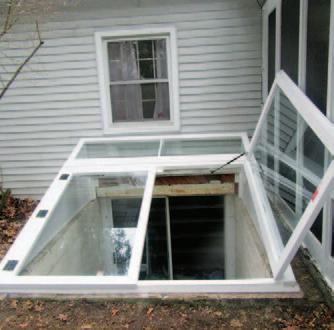
Individuals who don’t live near the equator or in another warm climate know that winter will rear its chilly head this year. Cold temperatures and snowy conditions may be excellent for skiing and sledding, but gardeners recognize these conditions are not ideal for their plants.
The inevitable slowing of activity in the garden during fall marks a time to shift attention from constant plant care to preparing the landscape for next season. It may be tempting to simply let Mother Nature take over, but a little pre-winter TLC can ensure gardens make it through winter unscathed.
Remove Spent Plants
Decomposing organic material is the basis for compost and other fertilizers. However, vegetable plants that are left to sit can lead to decay in the garden. Decaying plants can serve as hosts for pest populations and diseases. Rotting vegetables also can drop unwanted seeds into the soil, which eventually can strip nutrients that normally would go to next year’s crops.
Ornamental plants and perennials can be cut back in fall. Cut down stalks and remove leaves.
Plant A Cover Crop
The gardening resource
This Is My Garden recommends planting a cover crop to set the stage for a successful spring. A cover crop protects the soil and can return nutrients to it. When the soil is bare during winter, weed seeds can easily blow in and lie in wait , ultimately becoming a problem during the ensuing year. Cover crops can include clover or field peas, which will increase the levels of available nitrogen.

Amend The Soil
Fall is a perfect time to add soil amendments, such as manure and compost. These fertilizers will add nutrients and break down gradually, enriching the soil over the winter.
Replenish Mulch
Gardeners may have added mulch around shrubs and other areas of the landscape early in the season because it is attractive. But mulch also does much to reduce water loss and protect the soil from erosion. It may inhibit weed
growth as well. Replacing mulch when the mercury drops can insulate the soil, which helps to regulate soil temperature. A thick layer of mulch around root vegetables left in the garden can offer protection against hard frosts.
Divide Bulbs
Divide plant bulbs and plant them where you want flowers like daffodils and tulips to grow in the spring.
Prune Dormant Plants
Wait until plants are dormant to prune them and
adjust their shape. Most shrubs and trees should be pruned in late winter, right before new growth.
Move Potted Plants
Bring delicate plants into a sheltered area, such as a greenhouse or indoor garage, so they can continue to thrive during the winter.
Fall and winter still provide opportunities to spend time in the garden. At this point in the year, gardeners can prepare landscapes for the next season.

Formal dining rooms were once a must-have in homes, but that popularity has waned in recent decades. Dining rooms were the spaces to host holiday dinners or family birthday parties. Slowly but surely, dining rooms became obsolete in modern homes that favored open-concept layouts. And in those homes that had formal dining areas, the need for home office spaces or playrooms for children saw many dining rooms repurposed. According to the National Association of Home Builders, 43 percent of millennials prefer the look and feel of an open-concept layout and casual dinner parties. However, even though dining rooms may no longer be de rigueur, designers are noticing an increase in clients requesting formal dining spaces, according to
a report in Southern Living. After spending a year or more during the height of the pandemic at home with few to no barriers between rooms, homeowners may be looking for homes that carve out niches for specific tasks once more. It may not be long until homes come back to including more traditional layouts with separate dining spaces to make hosting a little more intimate.


















and there’s no denying that a well-planned interior goes a long way toward making a house a home. However, the exterior of a home, including its landscaping, can serve as a source of pride and catch the eye of prospective buyers when the home hits the market.
It’s easy to walk past a home with an eye-catching exterior and assume the homeowner has a green thumb or has spent lots of time and money working on the landscaping. Though that may be true, oftentimes it’s the simplest strategies that make all the difference. Homeowners can keep these strategies in mind as they look to transform the exterior of their homes.

• Dress up the walkway. A longer walkway can give guests a strong first impression of a home and won’t break the bank. Create new planting beds and plant bright plants and flowers along each side of the walkway. If it’s necessary and within budget, lengthen the walkway to create the

feel of a more grandiose entryway.
• Make things more symmetrical. A messy landscape can give a poor first impression, even if the area features some beautiful plants. In such instances, a little effort to make things more symmetrical, with equal parts grass and vegetation, can create a cleaner, more inviting look.
• Mulch your flower and tree beds. Mulch is a relatively inexpensive but
effective way to add aesthetic appeal to a landscape. Freshly mulched beds beneath trees and flowers creates a clean and organized look, and the mulch also serves a practical purpose, as it reduces weed growth and helps the soil retain moisture so plants stay healthy and look better throughout the warmer months when rainfall may not be steady or significant.
• Plant shade trees. Shade trees can be especially useful


6” x 8” x 8’6” (Used-2/3 Sides)................
x 8” x 8’6” (Used 4 Good Sides)................
x
x 8” x 8’6” (4 Good Sides)
x 9” x 8’6” (USED-2/3 Sides)
x 9” x 8’6” (4 Good Sides)








when selling a home. The shade provided by trees can shield grass from blistering summer sun, potentially helping it stay green. A lush green lawn appeals to buyers and gives the impression the home has been well maintained. In addition, shade trees can be used to create the look of a backyard oasis. A well-placed bench beneath a large shade tree can entice buyers who want a relaxing spot to enjoy warm summer days outdoors without getting a sunburn.
• Consider maintenance. The more exotic an exterior landscape is, the more maintenance it’s likely to require. Lawn and garden enthusiasts may not be turned off by landscape features that require steady maintenance, but homeowners who don’t have much time for such work should keep things simple. A poorly maintained landscape, even if it includes exotic plants and elaborate designs, will adversely affect curb appeal. Another feather in the cap of low-maintenance landscape features is they could prove more appealing to prospective buyers, who may view elaborate, exotic landscaping as a lot of extra work they won’t want to do.
Some simple landscaping strategies can help homeowners transform their home exteriors without requiring a significant investment of time or money.
Homeowners are spending big bucks on home renovations. According to the Joint Center for Housing Studies at Harvard University, home improvement project spending continues to increase. It’s predicted to go from $472 billion spent in 2022 to $485 billion in 2024. Those targeting a specific home renovation likely know there is much that goes into the process from start to finish. Patience is a requisite virtue with any remodel, as even a thoroughly conceptualized plan can encounter a few bumps along the way. Although there is no way to completely remove renovation-related obstacles, there are ways to make projects go more smoothly.
• Establish a clear plan from the beginning. Now is not the time to be on the fence about details. A vision for the renovation is essential, and should include details about layout, materials, colors, and design.
• Manage your expectations. Again, this speaks to a need for patience with a project but also involves flexibility. Being too rigid when choosing materials can require waiting for backordered supplies to come in. Wanting contractors to bend to your schedule can delay the project. Creativity and flexibility are key.


Each






















• Establish a budget. It
Black House Real Estate stresses the importance of creating a budget before starting a renovation, which may involve working with a local professional to help. Houzz advises preparing for worstcase scenarios by adding anywhere from 1 percent to 20 percent to the budget. Commit to sticking to the budget no matter what comes down the pike.
• Assemble a good team. Thoroughly research all contractors who will be involved with the renovation. These include designers, architects, builders, and more. Be sure they come highly recommended and research online reviews. A good team removes some stress from the project because the work is in experienced hands.
• Prepare the space for the remodel. Any work you can do will help save on labor costs and make it easier for the team to get started on the project. Clear out clutter and personal items. Ask if it would be helpful for you to handle some demolition.
• Have an escape hatch at the ready. Home renovations can cause upheaval to daily life, and that can mean stress on top of already chaotic schedules. If money and situation allow, plan a getaway during a particularly tough stretch of the project so the noise, mess, and disruptions will not induce headaches. Consider spending a few nights at a hotel or a friend or relative’s house to escape the constant grind of the project.
Home renovation projects add value and functionality to homes. Such undertakings can go more smoothly with some sound planning.
Garages may rank below kitchens and bathrooms in the home renovation pecking order, but these unsung heroes of suburban dwellings deserve their day in the sun. It’s easy for garages to become convenient, if crowded and disorganized, storage spaces, but scores of homeowners are embracing the idea that renovated garages can serve a more functional purpose. Prior to beginning a garage renovation, homeowners can consider a host of factors that will guide the direction of the project and ultimately produce a more functional space.
• Appeal: Though many homeowners understandably want to ensure their homes are amenable to their own lifestyles without worrying about the effects a given project might have on resale value, it’s best that they do not completely ignore the latter variable. A 2019 analysis from the National Association of Home Builders found that 65 percent of newly constructed homes included two-car garages. That suggests a traditional two-car garage remains widely appealing. However, it’s worth noting that the NAHB analysis was conducted prior to the COVID-19 pandemic, when fewer people were working from home. Now that more people work from home, some may see a garage converted into a home office space as more functional. Homeowners can speak with a local real estate agent to learn more about local buyers’ preferences before beginning a garage renovation project.
• Function of the space: It’s important to consider why you want to renovate the garage. Is it to build







a designated home office space? A fully outfitted home gym? A home theater? An extra bedroom? An inlaws suite? Each of these options are popular reasons to renovate a garage, and each may require a different approach during the project. The desired function also may affect the cost, so it’s best to identify precisely what the room will be used for post-renovation.
• The existing space: When mulling a garage renovation, contact a local garage conversion expert to audit the space. Such a professional can assess the existing space and determine what will need to be done beyond the design of the room. Will additional electrical outlets need to be installed? Will the room require additional


ventilation? Will a new doorway need to be created to allow for easier access? These are questions a qualified expert can answer. Some may estimate the cost as well, but it’s likely the garage expert will defer estimates regarding electric and ventilation to contractors who specialize in those areas.
• Storage: The home renovation experts at Angi estimate that the average garage remodel costs around $18,000. That’s considerably less than a home addition project, which can easily exceed six figures. So a garage remodel might be more budget-friendly than a room addition. However, homeowners should consider what’s currently in
their garages and where those items will end up if the room is repurposed. If it’s primarily lawn care items and kids’ toys, a new shed with ample storage space might work. But if the garage currently holds more items than can reasonably fit in a shed, homeowners should
determine where those items can be stored once the garage is repurposed. Garage renovation projects can make these spaces more functional, making them worthy of consideration among homeowners who feel like they need some additional space at home.



























The drip of a faucet, the bang of pipes and the visible signs of a leak under the sink are some notable indicators of plumbing problems. Other, potentially serious issues may not be so evident. How can homeowners tell if they have potential plumbing problems? The following are some sights and sounds that indicate it is time to call in a plumber.
• Banging or clanking: Plumbers refer to these noises as water hammer. This is when a rush of water forces through the pipe and bumps into a closed valve, producing a metallic noise. Something is in the pipe that is restricting water flow. Over time, the flow of water meeting an obstacle could loosen pipe joints as the water tries to find an easier workaround.
• Pipe discoloration: If there is any sign of discoloration on pipes, particularly rust, it could be a symptom of a dripping sink or drain line that is slowly leaking. A slow leak can eventually turn into a big mess if left unattended.
• Sewer smells: Pipes need traps and vents. Traps are designed to prevent sewer gas from entering the home, while vents channel sewer

odor up to the roof. If there are sewer smells, it could mean a trap has dried out or a vent line is cracked, says Family Handyman.
• Low water pressure: If you turn on the faucet and the water pressure is poor, it could be the result of a clog or a leak somewhere in the system. Pipes that are improperly sized for a home also can affect pressure.
• Sluggish drains: Clearing drains is perhaps the only plumbing problem that homeowners should address themselves. More often than not, drains that fail to drain
quickly have a blockage such as hair or other debris. If attempts to clear the drain do not work, it is best to bring in a professional plumber.
• Shaking sounds: Water can cause occasional noises, but if the sounds are frequent, the pipes are not secured firmly enough. A plumber will need to tighten the mounting straps or even completely replace them.
Plumbing issues are nothing to take lightly, as small problems can quickly escalate and cause thousands of dollars in damage.



Watch parties are wildly popular. Whether it’s a gathering for the big game or a group of friends anxious to see the latest episode of a favorite television show, watch parties have become a fun way to enjoy special events with family and friends.
Watch parties can make for a fun night out, but homeowners can do much to make their own living room a goto spot for the next big game or series finale.
• Expand seating space, if necessary. Of course, guests for the big game or movie night will need a place to sit. Homeowners who love to host can determine their ideal gathering size and then work to ensure their entertaining space has enough seats to accommodate everyone. Multifunctional furniture can help if space is limited. For example, some stools that are typically used as footrests can be repurposed as seats when guests arrive and an upholstered coffee table can provide an additional space for guests to sit. Another option is to work with a contractor to add a built-in window seat or bench beneath a picture window.
• Convert an existing space into an open floor plan. A 2023 survey from Rocket
HomesSM found that more than half of individuals surveyed preferred open layouts to traditional layouts. Open layouts can make living spaces feel more airy and less claustrophobic, and such designs also make it easy to accommodate more guests. Homeowners can speak with a local contractor to determine ways to convert living spaces into open floor plans.
• Invest in your internet. Whereas cable television used to be the go-to option when watching sports, movies and television at home, streaming platforms have now taken over, as many, including Peacock, Amazon Prime and Netflix, are now even broadcasting National Football League games. Homeowners who want to host watch parties must invest in high-speed internet and perhaps even a new router to ensure games and shows are not interrupted by the dreaded spinning wheel or issues that can arise if internet speeds are slow. If necessary, relocate the router to the living room to reduce the risk of streaming interruptions.
• Reconsider your lighting scheme. If movie nights or television shows dominate your watch party schedule, some recessed lighting in the living room can reduce glare and reflections on the screen once a movie or show begins. Recessed lighting above a mounted television can illuminate the screen so everyone can see it but won’t appear in the screen and adversely affect what viewers can see.



















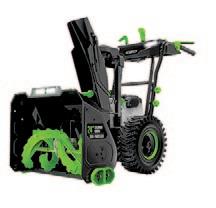



• Consider upgrading your television and sound. It goes without saying that a television is wildly important when hosting a watch party. The experts at Best Buy note that 8K resolution is the highest resolution available in the television market. Such devices provide an extraordinary viewing experience, but they also can stretch homeowners’ budgets. A 4K television won’t cost nearly as much, and these devices also provide superior image quality. When a new television is paired with a premium soundbar, viewers can settle in for a memorable game day or movie night experience.
Homeowners can embrace various strategies to make watch parties an extraordinary experience for themselves and their guests.

Landscapes are vulnerable to the elements during the cold weather months. Everything from de-icing products to hungry animals to the weight of snow can affect trees, shrubs and other plants.
Just because certain greenery will go dormant during the winter doesn’t mean landscape maintenance ends when the mercury dips. Homeowners can take certain actions to winterproof their properties and safeguard landscapes so they recover more readily when spring arrives.
Utilize barriers and deterrents
When resources are scarce, animals will be on the hunt for anything that’s edible, and that includes whatever greenery is growing on a landscape. Physical barriers in garden beds and around trees can help prevent damage caused by moles, voles and deer. Line the bottom and sides of garden beds with garden cloth to prevent ground-burrowing animals from getting in from beneath, suggests the gardening resource I Must Garden.
Wrapping shrubs in burlap or covering them in temporary netting can deter deer, who will seek accessible food sources over the winter. Erect fencing around new trees to keep deer away from the bark and lower branches.
Make the yard less attractive to deer and burrowers by opting for fatbased suet cakes to feed birds rather than loose seeds and berries in feeders, which

herbivores will enjoy. Also, don’t overwater or mulch landscapes too early. The loose soil and warmth of the mulch may entice moles and voles and other rodents to stick around in those areas
and feed on plants. Use a safer melting product
Investigate options in snowmelt products, as traditional rock salt can injure buds and branches
and kill lawns. In addition, avoid piling salted snow in one area of the landscape, as it will concentrate the salt in that spot. Spread out snow piles to help minimize the damage to delicate plants.




Secure saplings and juvenile plants
Harsh winds and battering snow can damage young plants. Use stakes and lattices to secure them so they’ll be better able to withstand the weather, suggests Total Landscape Management, a commercial and residential landscaping company.
Promptly remove snow from branches to help trees and shrubs; otherwise, the weight of ice and snow can break off branches and cause irreparable damage.
Erect a snow barrier
Prior observation tends to educate homeowners about which areas of the landscape are most vulnerable to snow
drifts and blustery winds. During the winter, winds often blow in from a northeasterly direction, but each homeowner can make his or her own assessment. Put up a tarp between two stakes to serve as a “snow fence” that protects vulnerable areas of the landscape from blowing snow.
Keep plants cozy Wrap plants in burlap, garden blankets and plant domes to insulate them from cold weather and some animals. Move container plants into a garage or shielded area for the winter. Winter can place landscapes in peril. A few strategies can provide protection.








Parents typically make certain changes around a home to ensure it’s accommodating to children. Child-proofing is a necessity, but entire rooms also may be transformed with children’s enjoyment and wellbeing in mind.
It’s common for homeowners to set aside rooms for children to play and explore. These playrooms may initially feature infant swings and bouncers, and eventually start to accumulate the toys that kids receive on holidays and birthdays. Easels, building block sets, puzzles, video games, books, and so much more fill these playrooms where young children spend the majority of their time engrossed in imaginative play. But as children grow, playrooms may no longer be necessary. Homeowners can ensure these rooms evolve with the family, and here are a few ways to do just that.

The National Institutes of Health says children between the ages of eight and 17 spend an average of 1.5 to 2 hours playing video games each day. It’s important for parents to monitor their children’s gaming, particularly when kids participate in social platform games that involve people with an internet connection chatting and working together. One way to do so is to locate the gaming setup in a central location, like a home theater room.
Establish A Hobby Space Trade in kids’ toys for “toys” that everyone in the family will enjoy. Turn the room into one where family members can explore their passions. This may include scrapbooking, painting, yarn crafts, collecting, photography, and more.
Create A Quiet Learning Spot
As children grow up, they may need to spend more time studying. Transforming a playroom into a library or a study space can provide that out-of-the-way spot to get
(Continued On Page 9)
Renovations that make homeowners and residents of a home happy are always worth the investment. Though it’s certainly true that projects that create more functional, usable space and add comfort and convenience are worth the price, such renovations are even more beneficial if they provide a good return on homeowners’ financial investment. Returns are often cashed in when homeowners put their homes up for sale, and each year Remodeling magazine releases its “Cost vs. Value Report,” which considers a wealth of data across the United States to determine which renovations return the highest percentage of homeowners’ financial investment. According to the “2024 Cost vs. Value Report,” the following are five projects that provide a strong return on investment (ROI).
1. Garage door replacement: The average job cost for this project is slightly more than $4,500 but the project is valued at $8,751, providing an especially high 194 percent ROI.
2. Steel door replacement: Remodeling magazine notes that a steel entry door replacement is worth double what it was worth in 2023. This project offers a 188

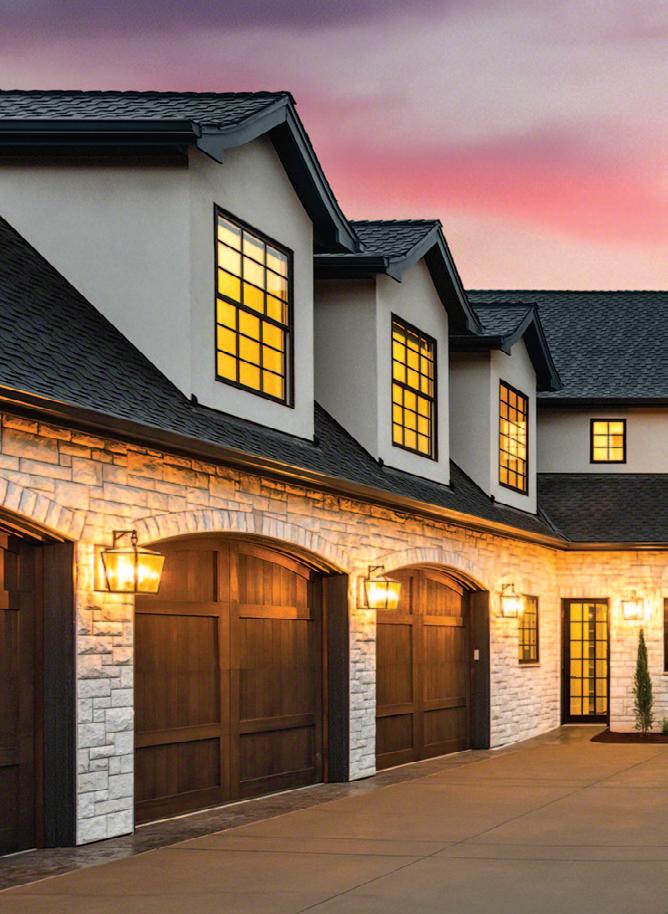
percent ROI on an average investment of $2,355.
3. Manufactured stone veneer: A manufactured stone veneer is a man-made product that appears as if it’s natural stone. Many homeowners prefer manufactured stone veneer to natural stone because of the price, as the former is less expensive and easier to install, which means lower labor costs as
well. The comparatively low cost of manufactured stone veneer is perhaps one reason why it averages a roughly 153 percent ROI on an average cost of just more than $11,000.
4. Grand entrance upscale (fiberglass): Few things are as awe-inspiring as an impressive entryway, and upgrading to a grand fiberglass entrance door
provides a 97 percent ROI. Components of these entryways can vary, but Remodeling magazine notes the project may entail removing an existing entry door and cutting and reframing the opening for a larger with dual sidelights.
5. Minor kitchen remodel: According to the “2024 U.S. Houzz & Home Study” from Houzz Research, kitchens were the most popular rooms to renovate in 2023. There’s no denying the appeal of a newly renovated kitchen, and homeowners considering such a project may be happy to learn that a minor kitchen remodel that costs an average of around $27,000 provides a 96 percent ROI. Bankrate.com notes that minor kitchen remodels typically keep the current kitchen design, size and layout intact, but these projects may involve painting walls, refreshing backsplash, replacing lighting and plumbing fixtures, and changing cabinet hardware and facades. Home renovations that provide a significant ROI can make homeowners happy once a project is completed and even happier when the day comes to put a home up for sale.

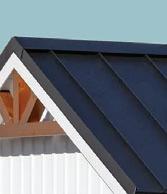








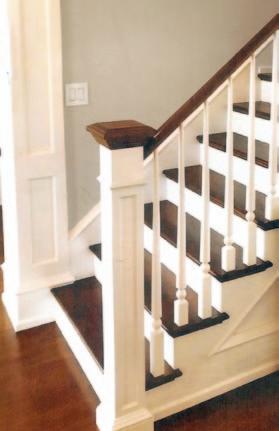





































































Bathroom renovations are significant undertakings that cost homeowners sizable amounts of money. According to Remodeling magazine’s “2024 Cost vs. Value Report,” the average cost of a mid-range bathroom remodel across the United States in 2024 is around $25,000. Homeowners who want an upscale remodel can expect to spend around $80,000 in 2024.
Such a large financial commitment underscores the significance that homeowners get their bathroom remodels right. Mistakes will only increase the already substantial financial commitment homeowners must make, so it can help to keep these dos and don’ts in mind.
DO work with a certified, reliable contractor. YouTube tutorials can give a false impression of renovation projects in relation to their degree of difficulty. Renovations as significant as
bathroom remodeling projects require the skills and experience of professionals.
DON’T ignore return on investment (ROI). There’s no denying certain projects provide a better return on investment than others. The upscale bathroom remodel with a nearly $80,000 price tag noted above may prove awe-inspiring, but homeowners looking to get as much of their money back at resale should know that such a renovation recovers 45 percent of homeowners’ initial investment. By contrast, the mid-range bathroom remodel yields a 74 percent return according to Remodeling magazine. Though ROI may not be the deciding factor for every homeowner, it definitely merits consideration when planning a project.
DO pay attention to the details. Planning a bathroom renovation can be overwhelming, as homeowners have many decisions to make before the project even begins. For example, homeowners will have to choose a vanity, fixtures for the vanity, light fixtures, toilet, showerhead, and an assortment of additional

features when planning the project. Contractors work with clients to show them all of their options, and some will offer advice on products or materials if asked. But homeowners are ultimately the ones who will have to live with the choices they make during the planning process, so these details merit ample consideration and should not be treated as trivial.
DON’T emphasize cost over quality. Homeowners should do their best to establish a renovation budget and stay within that budget, but quality materials should take precedence over cost. Many budget-friendly furnishings and accessories are durable and aesthetically appealing, so homeowners
need not enter a bathroom renovation thinking highend products are their only options. But it’s important that homeowners recognize the conventional wisdom that buyers get what they pay for when it comes to home renovations. If homeowners try to cut costs on materials, they may need to update or redo the bathroom much sooner than they would if they invest in quality furnishings and accessories the first time around.
Bathroom renovations can be costly. Remembering some simple dos and don’ts can give homeowners the peace of mind that their renovation investment will result in an impressive, durable space.


(Continued From Page 8)
homework and studying done. Adults in the home also can use it for reading, paying the bills or any other task that requires concentration and quiet.
Build A Home Gym If the space is large enough, bring in some workout equipment and make the play space one that encourages exercise and fitness. You may not even need large equipment and can utilize interlocking foam tiles that already may be in the playroom. With some free weights, resistance bands and even your own body weight, you
can perform a number of beneficial exercises.
Expand Your Living Space If the playroom currently abuts another room that can use some more real estate but is separated by a wall, take down the wall to increase the square footage. Set It Aside For Guests
Clean out the toys and bring in a bed and nightstand. Now you’ll have a dedicated spot for overnight guests to stay, or a room that visiting older children (and eventually grandchildren) can call their own.
Playrooms are much-used areas when children are young. These rooms can evolve as kids get older and families’ needs change.




























Increasing storage capabilities at home is a popular goal among many homeowners and renters.
Despite how much space a person may have at home, there’s often a desire to have more or maximize the areas that are there. According to the Self-Storage Almanac, there are an estimated 51,206 storage facilities operating in the United States today, and MJ Partners Self-Storage Update says 11.1 percent of households currently rent at self-storage facilities.
IBISWorld indicates the Canadian self-storage industry has grown at an average annual rate of 3.1 percent over the last five years.
People often turn to external storage facilities to house their belongings when space is at a premium at home. Others may focus their organization energy on closets, garages and basements to free up room.

common areas around the home also can provide additional sources of storage.

and family
rooms are areas of the home where people spend many hours. These tend to be multifunctional spaces where people entertain, lounge and even enjoy movies or gaming. Possibilities in these living spaces that can create extra storage include furniture that serves doubleduty. For example, a storage ottoman adds decorative appeal but also can be filled with board games or books. Cabinet-style TV stands may not be as streamlined as mounted versions, but they’re ideal places to stash games, remote controls and other accessories.
An entryway or mudroom can quickly succumb to clutter. When organizing such a space, think about the needs of the household.
when not in use. A wallmounted rack can hold the current season’s jackets or sweaters, as well as purses or backpacks for easy access. A shelf with some hooks can store keys or hold a basket to store the daily mail.
Hallway and Closet Closet organization systems can be the unsung heroes in closets utilized by multiple members of the family. These customizeable components can be sized accordingly for the space, and then configured as needed with a balance of shelves and hanging racks. An out-of-the way nook or long hallway can be enhanced with a bookshelf to hold photo albums or that library that only continues to grow as new reading material is acquired.
A storage bench will be a place where everyone can sit to put on shoes, and then stow footwear underneath 9
Homeowners can make common areas more functional with the addition of storage.























































With the holidays approaching, many will be prepping to welcome family and friends into their home as overnight guests. Hosting loved ones, especially during the holiday season, is a selfless act that enables families to create lasting memories.




As hosts prepare their homes for loved ones, they can consider these tips to make guests rooms as welcoming as possible for friends and family.
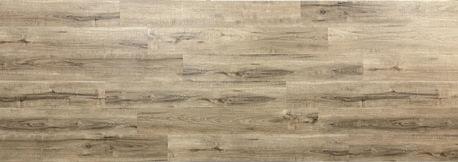











• Check the bedding and replace, if necessary. It’s easy to overlook the comfort of bedding in a guest room, particularly since hosts may never sleep in their own guest rooms. When furnishing a guest room, it’s not unheard of to repurpose an existing mattress from an owner’s suite or another room and use for guest room bedding. Though that’s acceptable, it’s necessary to periodically inspect a guest room mattress to make sure it’s still comfortable and supportive. If not, replace the mattress. A mattress topper, a new comforter and a new set of soft sheets also can make guest room bedding more comfortable.
• Clear out the clutter. Guest rooms can easily become depositories for old furniture and other items, which can create a cluttered and less than welcoming atmosphere in a space. Give each guest room a thorough once-over before guests arrive, removing pieces that might be creating a claustrophobic vibe. Keep in
mind that guests will bring luggage, so a less cluttered space with ample room for their bags can make it easier to settle in.
• Take a cue from hotels.
Hotels ensure guests have ample creature comforts at their fingertips. Holiday hosts can do the same when welcoming loved ones into their homes. Provide ample bed and bath linens, ensure the room has ample lighting so guests can read at bedtime and get dressed in plenty of light in the morning. A foldable luggage rack is another nice touch that can keep guests from having to dig through their suitcases on the floor.
• Add an armchair where possible. A spacious guest room allows hosts to provide some extra creature comforts. If the room allows, place a comfortable armchair and side table in the space so guests can read a book or catch up on the news on a tablet or smartphone. A comfortable, quiet and secluded place to sit provides guests a respite from the hustle and bustle of a home filled with holiday guests.
• Install window coverings, if necessary. A feeling of privacy is another important creature comfort guests will appreciate. Replace existing window treatments if they do not provide adequate privacy or if they do not keep the elements out in the morning. For example, a room that is sun-soaked by early morning each day may make it hard for guests to get sufficient sleep. Some blackout curtains or a new set of blinds allows guests to determine the amount of natural light that will greet them each morning.
Home renovations provide a host of benefits. Such projects can increase resale value and improve on the safety, aesthetics and functionality of a home.
Some homeowners may employ the mantra “go big or go home” when they embark on home improvements, thinking that only the largest renovations produce noticeable change. But that’s not the case. Various smaller renovations can provide a lot of bang for homeowners’ bucks as well.
• Countertops (and hardware): A complete kitchen overhaul may stretch some homeowners’ budgets. However, changing an older countertop for a new material can provide the

facelift a kitchen needs. And while changing the cabinets may be homeowners’ ultimate goal, swapping hardware in dated finishes for newer handles and pulls can provide low-cost appeal.
• Paint: Painting a space is an inexpensive improvement that adds maximum impact. Paint can transform dark and drab rooms into bright and airy oases. Paint also can be used to create an accent wall or cozy nooks. Homeowners also can showcase their personalities with their choice of paint colors.
• Lighting: Homeowners should not underestimate what a change in lighting can do. When rooms or exterior spaces are illuminated, they take on entirely

new looks. It’s worth it to invest in new lighting, whether it’s a dramatic hanging light over the dining
room table or task lighting in dim spaces.
• Weatherproofing: Improving windows, doors, weatherstripping, and insulation in a home can offer visual appeal and help homeowners save money. The initial investment may be significant, but those costs will pay off in energy savings. According to One Main Financial, space heating is the largest energy expense the average American homeowner has, accounting for around 45 percent of all energy costs.
• Mudroom: Turn an entryway into a more functional space with the addition of cabinets, benches or custom-designed storage options that perfectly fit the
area. Cubbies and cabinets can corral shoes, umbrellas, hats, bags, and much more.
• Accent updates: Any space, whether it’s inside or outside a home, can get a fresh look with new decorative accents. Invest in new throw pillows and even slipcovers for living room sofas. Use new tile or paint the brick on a fireplace in a den, then update the mantel with decorative displays. Purchase wall art that can bring different colors into a room. Change the cushions on deck furniture and buy color-coordinated planters. These subtle changes will not cost as much as fullscale renovations, but they can still help homeowners transform their homes.



Bringing the World’s Best Hardwood Floors to You!
Owner of Hardwood Floors of Lancaster, Thomas H. Dux, has traveled the world to bring the best hardwood flooring companies to North America. Hardwood Floors of Lancaster are specialists in wood flooring and will work hard to find you a quality product at an affordable price. If you cannot find what you are looking for, Hardwood Floors of Lancaster will make it for you! They are a member of the National Wood Flooring Association.
Featuring a Complete Display of Large Wood Flooring Samples from the Best Manufacturers Around the World! Offering High-Quality Natural Floors (no harmful formaldehyde or chemicals) at Factory-Direct Pricing!
Hardwood Flooring
Vinyl Flooring
They will expertly install, sand and finish old and new wood floors!







































Homeowners have many options at their disposal if they want to improve their homes. A focus on the exterior can be a promising and rewarding way to direct renovation dollars.
Curb appeal has a significant impact on how a home is viewed. Manicured landscapes, updated windows and doors and well-lit landscapes can improve the value of a home and ensure it sells quickly and above market rate.
When homeowners assess items they may want to change, shutters can be an area of consideration. Shutters can help windows look a little less plain. In most modern residential properties, shutters are purely decorative. However, their roots lie in home protection. Originally, shutt-
ers were used in lieu of windows so they were the only way to safeguard a home’s interior from the elements. Some shutters still offer that protection, but those typically are installed on homes in hurricane-prone areas.
Window shutters lend a finished and distinctive look to a home. When shopping for shutters, individuals can choose among various styles.
• Louvered: A louvered shutter features several wood slats that overlap each other on the same frame. A typical louvered shutter features two sets of slats separated by a center rail. Some functional louvered shutters are operational, meaning the slats can be tilted to allow air to flow through. But this is



something typically reserved for indoor shutters. Decorative ones have fixed slats.
• Panel: Panel shutters come in different styles. Raised panel shutters present a boxed design where rectangular features will stand out from the rest of the frame. Flat panel shutters (sometimes referred to as shaker) have the boxed design, but those rectangles are not raised. Recessed panels are the opposite of raised panels. As their name suggests, recessed panels are set back from the rest of the frame.
• Board and batten: Board and batten shutters are formed from grouped single boards joined together with shorter crosspieces of wood called battens. Battens are
the top of the window rather than on the sides.
• Scandinavian: Scandinavian series shutters are very decorative board and batten shutters. They feature a series of cutouts and designs.
• Combination: Some shutters offer the best of both worlds, with louvered on top and a solid panel on the bottom, or vice versa. This gives homeowners infinite options.















positioned horizontally or at an angle. These shutters have a more informal, rural feel.
• Bahama/Bermuda: These tropical-inspired shutters are of the louvered variety, but they’re installed from
Shutters are available in various materials. The most common include wood, vinyl and composite. Cedar, mahogany and pine are commonly used woods for exterior shutters. Vinyl is more economical and lightweight, but they can be challenging to clean and do not offer the longevity of other materials. Composite shutters are durable and cost less than wood in most cases.
Color is another consideration when replacing shutters. Shutters can stand out or blend in with the siding and other architectural accents. Shutters also can flank a front door to fully complete an exterior look.
















































































Many homeowners can undoubtedly take a stroll through their homes and find at least one space that could be repurposed to provide more functionality. Real estate professionals know that such sentiments are not uncommon, and many point to formal dining rooms as spaces that have fallen out of favor in recent years.
Formal dining rooms were once common in newly built homes, but the pivot toward open concept floor plans left it up to homeowners to decide if such spaces were for them. In a 2017 book published by the Cotsen Institute of Archaeology Press, authors used cameras to monitor life in many people’s homes, including how they used each room. The authors concluded that formal dining rooms were rarely used for eating. If that sounds a lot like home to current homeowners, then it might be time to consider some ideas to convert formal dining rooms to make these spaces more functional.
• Home office: Though the percentage of professionals working remotely has dipped considerably since the end of the pandemic, hybrid working is perhaps among the more lasting work-related byproducts of COVID-19. In its Global State of Remote and Hybrid study published in early 2024, the career networking resource LinkedIn noted that 13 percent of jobs posted to the platform were for hybrid positions. That means millions of workers can still utilize an accommodating home office space. A formal dining room can be converted to provide such a space, and the good news is that such a conversion need not require extensive renovations. A fresh coat of paint, an additional outlet or two and perhaps a new overhead lighting fixture can instantly transform the space at minimal cost.
• Reading room/library: Homeowners who dream of having a designated space for quiet reading can convert a little-used formal dining room into a space to curl up with a good book. Some comfortable armchairs, built-in bookshelves and perhaps an expanded floorto-ceiling window overlooking a side or backyard can help homeowners create a home library that will be the envy of any avid reader.
• Studio space: If there’s a resident yogi and/or artist living under the roof, then converting a dining room into a yoga or art studio, or perhaps even a hybrid space for those who enjoy both activities, is a no-brainer. A yoga studio conversion may not require as much investment as a kitchen overhaul or bathroom renovation, but an ideal home yoga space requires more than a mat and room to stretch. The Yogapreneur Collective notes that flooring in a yoga studio should be non-slip, easily cleaned, durable, soundabsorbing, and low maintenance. The Yogapreneur Collective asserts that different flooring materials may be ideal for certain types of yoga, noting that cork flooring is a go-to choice for professional studios that offer hot yoga. Similarly, the right flooring for an art studio may depend on the artist’s preferred medium, whether it’s oil painting, arts and crafts or another artistic pursuit. But any artist knows that a floor that’s easy to clean is perhaps best for a home art studio.
• Additional ideas: Some additional ways to repurpose a dining room include a gaming room for avid gamers, a memorabilia showcase for collectors or a pantry for foodies who love to cook but need some extra space to store ingredients and tools of the trade.
If a formal dining room is only utilized on occasion, homeowners may want to consider the many ways to convert such spaces into areas that are more usable every day.


Mold is a type of fungi that is found both indoors and outdoors. When mold grows inside, the health of people who spend time in the home or business where it grows can be in jeopardy.
According to the Centers for Disease Control and Prevention, moldy environments may cause stuffy nose, wheezing, red or itchy eyes, and even skin conditions. The Institute of Medicine reports there is sufficient evidence to link indoor exposure to mold with asthma symptoms, as well as hypersensitivity pneumonitis in certain individuals. Certain molds are toxigenic, meaning they can produce toxins, says the CDC. Though there are very few reports of toxigenic molds found inside homes, when present, they can cause rare health conditions.
No one wants mold in their homes, as it’s not only unhealthy, but also unsightly. The Environmental Protection Agency says there is no practical way to eliminate all mold and mold spores in an indoor environment. Certain rooms and spaces warrant careful inspection since they are more vulnerable to mold growth. Mold spores take root in areas where there is ample moisture. Controlling moisture indoors is key to controlling mold. Here are some mold-vulnerable spots








that merit some extra attention on the part of homeowners.
Bathrooms
Bathrooms generate a lot of moisture through showering and bathing. Bathrooms need to be vented to the outdoors with an exhaust fan. If there is no fan, one should be installed. If that’s not possible, open a bathroom window to air out the room after bathing. Wipe down surfaces in the bathroom to dry them and keep mold at a minimum.
Laundry Area
Clothes dryers are moisture-generating appliances that should be properly



exhausted to the outdoors.
Homeowners also should make sure that washing machines and utility sinks are working properly and there are no leaks that can cause mold growth behind or underneath the structures.
Kitchen
Mold also may grow in kitchens. Look under the sink and by the dishwasher for any leaks and areas susceptible to mold Ventilating cooking areas can help reduce moisture in the area as well, says the CDC.

Basement
Homeowners who have basements or crawl spaces could be breeding mold down there unknowingly, particularly if the areas are unfinished. Moisture, warmth and darkness are prime conditions for mold growth. A dehumidifier can be utilized in the basement to help reduce the moisture saturation in this space. Also, check for leaky pipes or windows that may contribute to mold growth. Humidity levels in a home should be kept between 30 and 50 percent to help limit mold formation.
Attic
Although an attic may not be a spot homeowners frequent regularly, it’s a good idea to get up there and look for potential mold problems. According to the North Carolina Department of Health, in the winter when buildings are heated, mold often grows in cold, uninsulated exterior walls where building surfaces are relatively cold compared to the indoors. Attics without proper insulation could be vulnerable to mold growth. Roofs also may be compromised by weather, causing leaks into the attic. Mold can be found anywhere in a home, but is more likely to grow in certain spaces.






































A kitchen is often the most utilized room in a house.
Meals may be prepared, cooked and often eaten in kitchens, and the room is often utilized as a homework spot or a makeshift place to pay bills and stay on top of household needs. By enhancing the organization and functionality of the kitchen, homeowners can enjoy these popular spaces even more.
Homeowners have increased their spending on home improvements in recent years. According to the Joint Center for Housing Centers for Harvard University, project spending rose to $472 billion in 2022 from $328 billion in 2019, and was estimated to be even higher in 2023. Kitchen renovations were the most popular upgrade and accounted for the highest budgets in 2021, according to Houzz. When the time comes to renovate a kitchen, homeowners can take steps to make these

spaces more organized and therefore functional. Here are eight tips to creating a more functional kitchen.
1. Increase storage, and then invest in more. Make the most of corner cabinets
and other potential dead spots in a kitchen. Various products can be used to organize awkwardly angled or shaped areas. Kitchen designers also can work with you to reconfigure

cabinets and kitchen layouts.
2. Organize utensils and dishes around the sink/ dishwasher. Rather than traversing the kitchen to put clean dishes away, make loading and unloading the dishwasher that much easier by locating commonly used items next to and above it. Similarly, place frequently used saucepans, baking dishes and other items near the oven or food preparation area.
3. Utilize drawer and cabinet organizers. Make a place for everything in the kitchen. Take out all items and see what you need and use all the time. Then coordinate storage around those items so everything fits perfectly. Pull-out





shelves and Lazy Susans also can facilitate access.
4. Add shelves to cabinets. If you can afford to have a custom-built kitchen, by all means design cabinets according to preference. If you’re using standard cabinets, you may have to reconfigure shelves and spacing to fit the items you have. This also will help you maximize cabinet space.
5. Organize the garbage. Have a pull-out drawer or cabinet to store trash bins. Separate compost, trash and recycling needs.
6. Create continuity in the room. Many open concept homes will have kitchens open up to another room in the home. Mirror the design scheme from elsewhere in the house, and make sure that the flow between spaces is not obstructed.
7. Create a beverage station. A beverage station can minimize the time needed to make a cup of tea or coffee or for the kids to grab juice or chocolate milk.
8. Have a workspace in the kitchen. Whether paying bills, making a grocery list or leaving notes for the family, a dedicated workspace can add more function to the room. Be sure there is task lighting nearby and ample overhead lighting to ensure that all kitchen needs are illuminated properly.
A more functional kitchen can make this already popular space even more so.
If you’ve slipped in the shower, stumbled on the stairs or taken a tumble on the terrace, you’re not alone. In fact, more than 5.1 million people report accidents and, tragically, nearly 6,000 die every year from accidental falls in the home. With some simple safety precautions, you can help avoid slips and falls and keep your family safe.
1. Clear the stairs. Whether your home has interior, exterior or basement stairs, it’s important to make them as safe as possible. Check to make sure railings and banisters are secure. Add lighting at each end of the staircase. Keep clutter off the steps and use safety gates if there are small children in the house.
2. Create safe surfaces. Some surfaces are more prone to be slippery, especially when wet. Tile in the bathroom, wood on the deck and cement around a pool can be hazardous.
3. Be tacky. Loose mats, small rugs and loose tiles or cement can all create unexpected perils. In the bathroom, make sure all bath mats have nonskid backing. Small rugs around the house should also be tacked down with tape, or not used at all, especially around stairs. Finally, don’t forget your home’s exterior. Walkways with loose or broken tiles, bricks or stones can create problems. Sometimes just pounding the loose stone back into place works great if the base is on dirt.















































Even with the best intentions and services of qualified contractors and crews, timelines for home renovation projects can be prolonged due to various circumstances. Various factors can affect the overall timeline of a project.
• Weather can impact the ability to pour foundations, do housing framing, install Belgium block pavers, or tend to roofing projects.
• The temperature outdoors and inside can affect paint drying times or how long it takes asphalt to cure.
• Getting a permit for work isn’t always cut and dry. There may be delays at the permit office that can affect the remodeling process.
• Mold, water damage, insect infestation, and other issues may become apparent once demolition begins. These issues often cannot be ignored and must be addressed before work can continue.
• Changes in design after an initial plan has been established can throw off the timeline, as it may require ordering new supplies or getting new architectural drawings.
• Supply chain issues became commonplace during the global pandemic, and building materials still may be affected. A project can be delayed by certain materials being backordered.
• Homeowners whose loans or other funding fall through may have to delay further work until they are able to pay for the work.
The meaning of the term “cozy” varies as it pertains to home decor. For some, cozy may mean intimate spaces with lots of quilts and throws. For others, cozy could indicate bright and airy spaces enhanced by plenty of fresh foliage.
Regardless of how they define cozy, homeowners typically want their homes to be inviting and comfortable. With that in mind, the following are some ways to impart a cozy vibe to any living space.
• Make use of a fireplace. Flames lapping wood (or faux wood in the event of gas-powered fireplaces) can put anyone in a tranquil state of mind. Fireplaces add instant ambiance and make great places for people to congregate and engage in conversation. During warmer months when the fire isn’t blazing, decorative candles can be lit to mimic the same feel.
• Add texture in the design. Texture can be anything from a raised pattern on wallpaper to a knotty area rug to a mosaic piece of artwork. A home with texture tends to create cozier impressions than one with all sleek and smooth surfaces.
• Enjoy a soft rug. Although many design experts say hardwood floors or laminate options are easier for allergies and keeping a home clean, a soft rug underfoot can be welcoming. Rather than wall-to-wall carpeting, place area rugs in spots that can use some cozying up, such as beneath beds and even under the dining table.
• Light candles. The warm,

flickering light of candles adds cozy vibes in spades. According to The Spruce and Paula Boston, a visual merchandiser for Festive Lights, candles can be used throughout a home to create instant atmosphere. Exercise caution with candles and fully extinguish them before retiring for the evening.
• Update bedding for the season. Crisp and light cotton and linen are cozy materials when the weather is warm. But when the temperature starts to dip, flannel or jersey bedding makes a bed that much more inviting, says Real Simple.
• Invest in lots of pillows. Pillows can instantly make a spot more cozy, whether it’s the living room sofa or an outdoor lounging nook. Look for materials that are durable for the space in which they’re being used.
• Think about warm lighting. The transition from incandescent light bulbs to halogen and LED is bene-



ficial from an environmental standpoint. However, LEDs illuminate with a more stark, blue light that can seem clinical in home spaces. Look for bulbs where the “temperature” can be customized. The more the color spectrum leans toward warm light, the more cozy a space will feel. This can be enhanced by putting some lights on dimmer switches, and toning down the brightness as needed.
• Install a bookshelf. Even for those who are strict devotees of e-readers, a shelf full of actual books interspersed with some wellplaced knickknacks can make a room feel more cozy. Books add texture, the feel of hallowed halls and libraries, and visual appeal. Making a home more cozy doesn’t have to be complicated. A few easy modifications can improve interior spaces.






























































Nice flooring draws immediate attention when entering a home. Natural wood floors tend to instantly impress, while the right kitchen flooring materials can create the welcoming feeling many homeowners strive to establish in the most popular room in the home.
Stunning floors are hard to miss, and floors that are well past their prime are equally noticeable. Aging floors may fall somewhere between fading and failing to live up to homeowners’ standards. Fading floors may not need to be replaced immediately, but the following are some signs that indicate existing floors are nearing their expiration date.

• Soft spots: A floor should not give when stepped on. Soft spots could be indicative of water damage caused by any number of factors. Some water damage is caused by mopping the floor with a soaking wet mop, while burst pipes also contribute to water damage that can cause

soft spots. A single soft spot on the floor may necessitate a relatively simple repair, but various soft spots indicate extensive damage that might be affecting the floor, subflooring or both. In the latter instance, homeowners should consider a full floor replacement.
• Creaking floors: Creaking floors are among the more annoying issues that can arise in a home. In such homes, residents feel as though every step they or their housemates take is being announced. In
addition, creaking floors can awake light sleepers, including young children. The floor experts at Discount Flooring Depot note that uneven subfloor could be the culprit behind creaking floors. Though that does not necessarily require a floor replacement, it can be hard to lift existing floors and then refit them after the subflooring has been addressed. That’s especially so if low-quality laminate flooring was installed. So while creaking floors may not require a full floor replacement, it’s an outcome homeowners who can no longer live with the noise can prepare themselves for.
• Dated look: Of course, some floors simply look like
the product of a bygone era. Various factors, including location, affect the resale value of a home, but Realtor. com reports that hardwood floors are preferred by both home buyers and renters. In addition, Realtor.com estimates that wood floors could provide a return as high as 80 percent of the initial investment when homeowners sell their homes. If existing flooring looks dated, it might be time to bring it up to speed with something more modern.
A home’s flooring is bound to draw the attention of residents and visitors alike. Homeowners who replace their flooring can ensure that attention is drawn for all the right reasons.







































